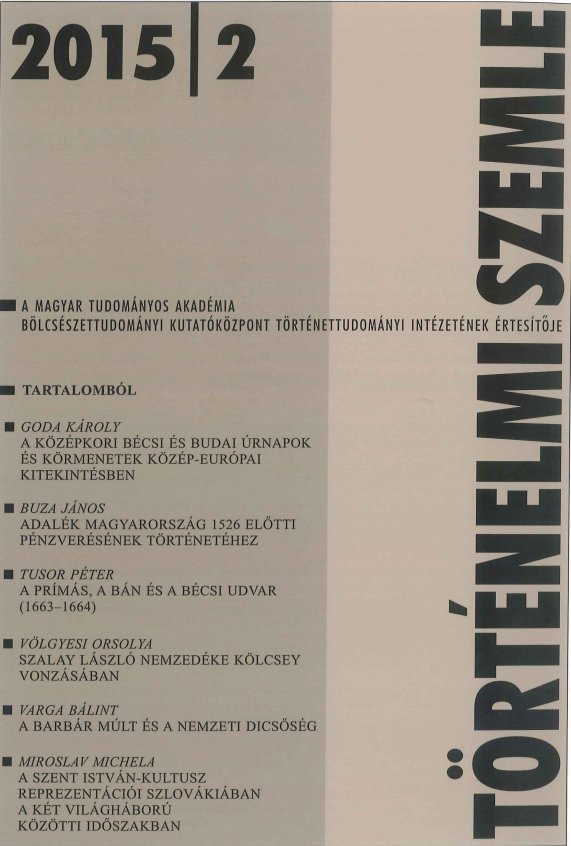A Dunába vetett vonópad - Adalék a Mohács előtti Magyarország pénzveréséhez
The Draw Bench Thrown into the Danube. On Minting in Hungary before 1526
Author(s): János BuzaSubject(s): Economic history, 16th Century, 17th Century
Published by: Magyar Tudományos Akadémia Bölcsészettudományi Kutatóközpont Történettudományi Intézet
Keywords: moneyers; Hungary; 16th century; Danube; history;
Summary/Abstract: Hans Dernschwam, an agent of the Fugger merchant company at Buda in the first half of the 16th century, wrote in his memories that the Hungarian moneyers used an instrument called draw bench (Zieh-Banck). The draw bench was applied to thinning the metal molds (Zaine) which were handed over to the moneyers. In 1526 the moneyers, returning to Körmöcbánya (today Kremnica, Slovakia), threw the draw bench into the Danube at Esztergom. The reason of this act remained unrecorded. News of the draw bench became known outside Hungary as well. Bertrand Behaim Jr, a chief official of mining and minting at Körmöcbánya – and previously chief master of coinage in Tirol and later in Austria – had the draw bench carried to Hall, close to Innsbruck, where the moneyers of Körmöcbánya presented the new instrument in the course of work. The new instrument also came to the attention of the city of Nuremberg. We know from a letter of Christoph Fürer, a well-to-do patrician, mining entrepreneur and wholesaler from Nuremberg, that with the draw bench used in Hungary, two moneyers could do the work that was performed by 6 to 8 of their colleagues working with the traditional methods. It is, consequently, fairly obvious that it was in fear for their living that the moneyers of Körmöcbánya threw into the Danube the instrument which would have made their work much more productive. They certainly had good reasons to do so, for the description of Dernschwam makes it clear that the application of the draw bench made it possible to produce greater number of better-shaped and cheaper coins than before. The fact that the name of the inventor of the draw bench was not recorded, has given birth to a number of hypotheses. The author of the present study is of the view that the inventor(s) of the instrument should be looked for among the personnel of the Thurzó Fugger mining enterprise. It is known from the researches of Oszkár Paulinyi, that János Thurzó and his son constructed and implemented at Nagybánya (Frauenbach; today Baia Mare, Romania) an instrument which permitted the extraction of water from the mines. This mechanical structure was much more complicated than the draw bench mentioned above. The employees of the Thurzó-Fugger mining company were consequently in possession of the required capital and professional skills to manufacture effective mechanical instruments. While the draw bench ceased to be used in the course of the 16th century, its expansion in Europe took momentum after the first quarter of the 17th century.
Journal: Történelmi Szemle
- Issue Year: 2015
- Issue No: 02
- Page Range: 281-298
- Page Count: 18
- Language: Hungarian

